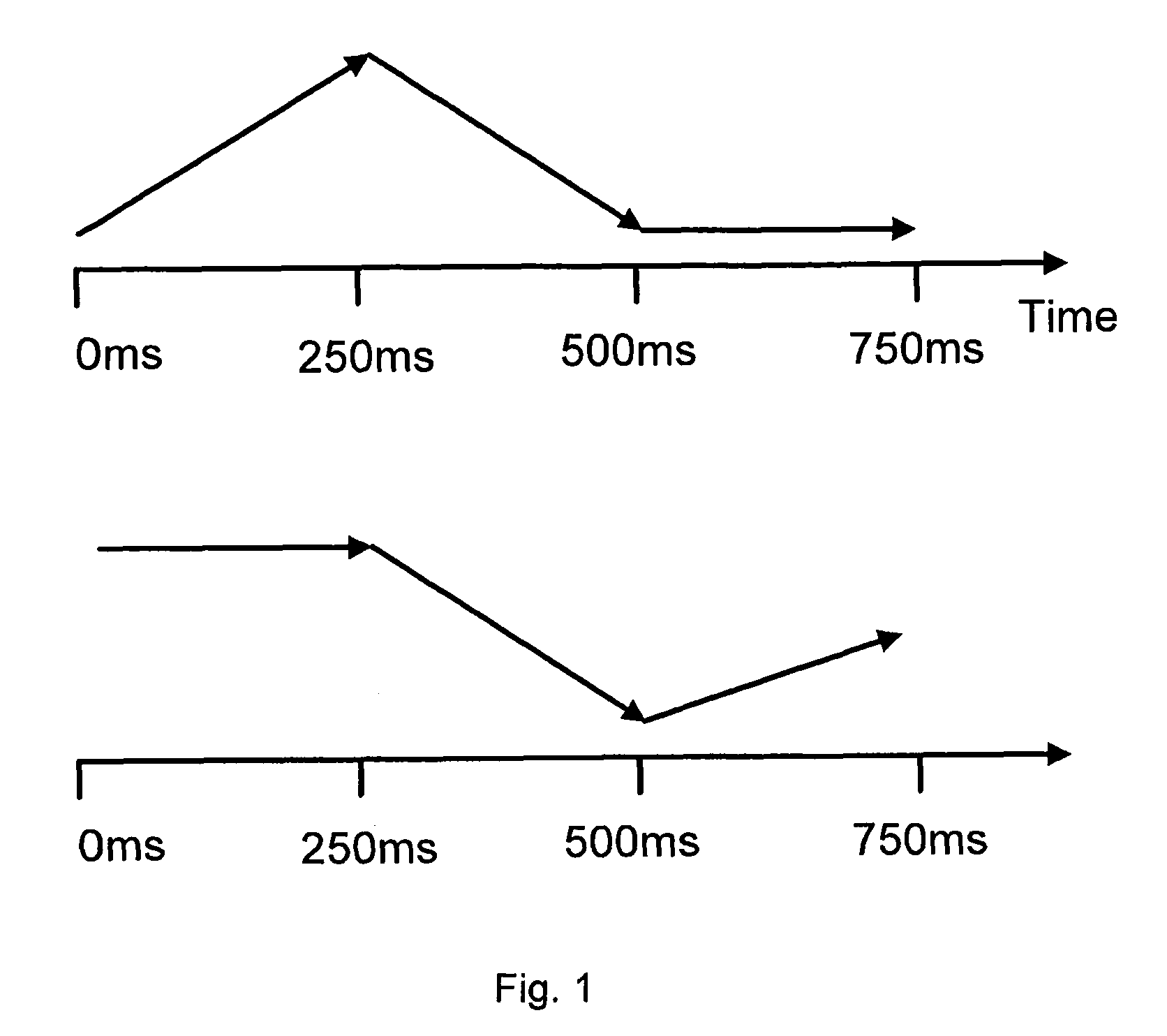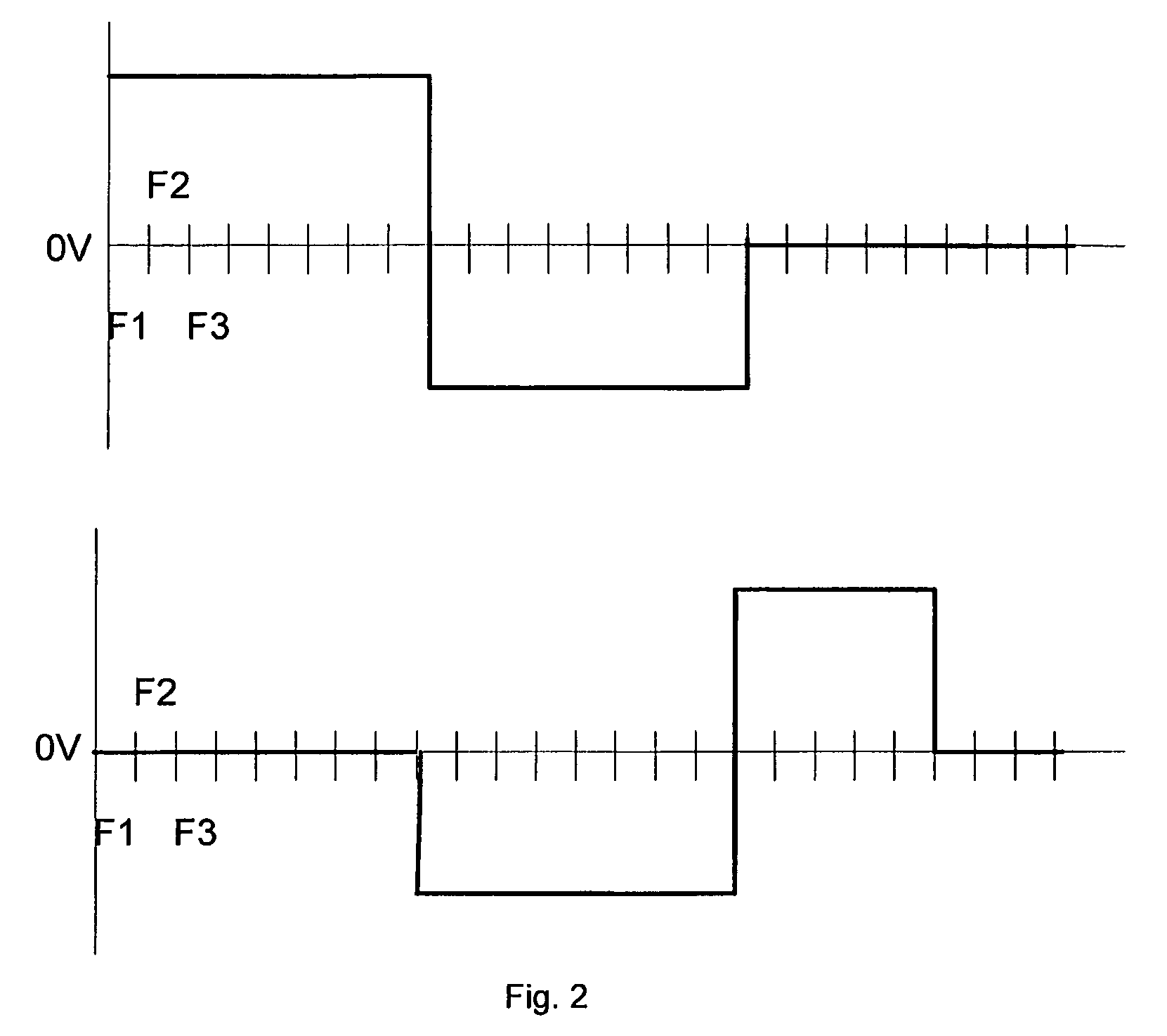Touch-sensing systems
a technology of touch sensor and sensor, applied in the field of touch sensor, can solve the problems of large capacitance, easy noise detection, and easy noise detection of capacitance-based touch sensors, and achieve the effect of enhancing user experience and reducing nois
- Summary
- Abstract
- Description
- Claims
- Application Information
AI Technical Summary
Benefits of technology
Problems solved by technology
Method used
Image
Examples
Embodiment Construction
[0048]A display screen used in a touch-sensitive display embodiment may be electrophoretic. Such a display screen may have pixels each comprising a capsule containing a set of white particles and a set of black particles, the sets respectively charged positively or negatively. In order to display a required image, voltages are applied to layers associated with the capsules to attract or repel the required set of particles in each capsule as desired.
[0049]An embodiment may however use any other type of display screen, for example, colour (e.g., RGB) and / or electrowetting, LCD, LED, plasma or a different type of electrophoretic display. Thus, the particular waveforms applied to pixels in an embodiment may not be specific to an electrophoretic display or to a particular type of electrophoretic display.
[0050]The embodiment further comprises a projected capacitance touch sensor over the display screen, the sensor comprising a matrix having electrodes, e.g., arranged as rows and columns. ...
PUM
 Login to View More
Login to View More Abstract
Description
Claims
Application Information
 Login to View More
Login to View More - R&D
- Intellectual Property
- Life Sciences
- Materials
- Tech Scout
- Unparalleled Data Quality
- Higher Quality Content
- 60% Fewer Hallucinations
Browse by: Latest US Patents, China's latest patents, Technical Efficacy Thesaurus, Application Domain, Technology Topic, Popular Technical Reports.
© 2025 PatSnap. All rights reserved.Legal|Privacy policy|Modern Slavery Act Transparency Statement|Sitemap|About US| Contact US: help@patsnap.com



